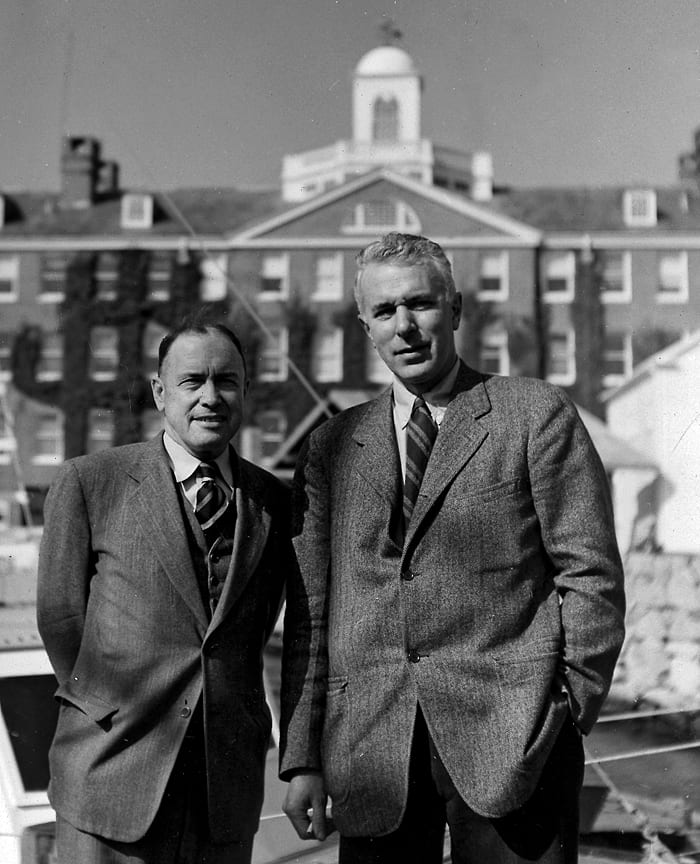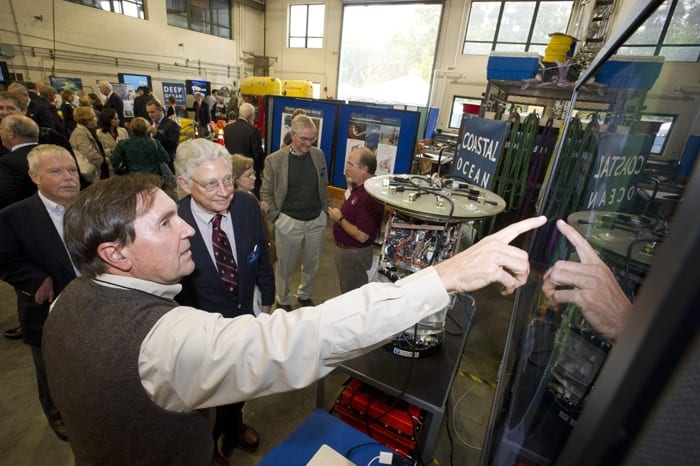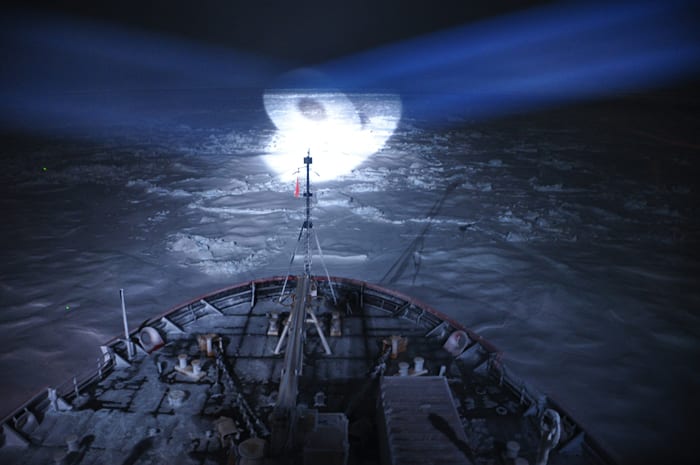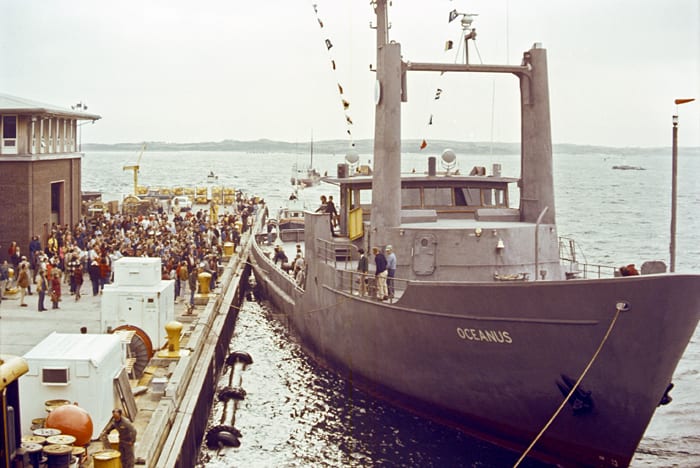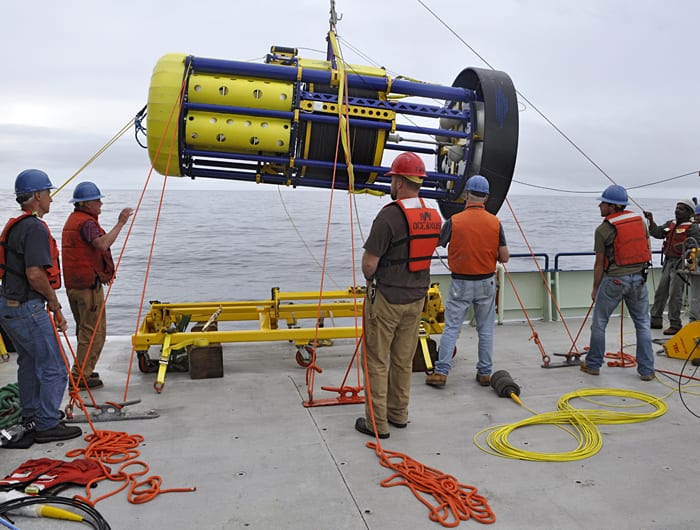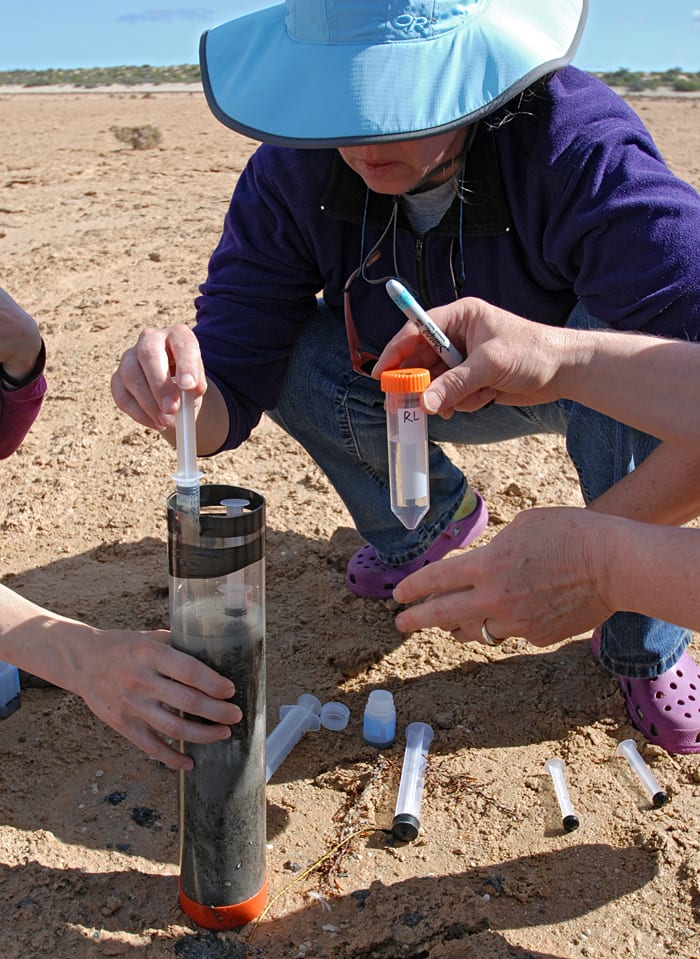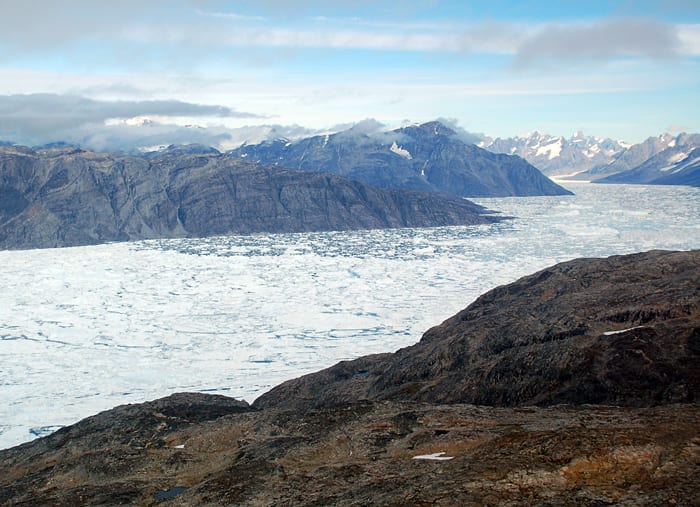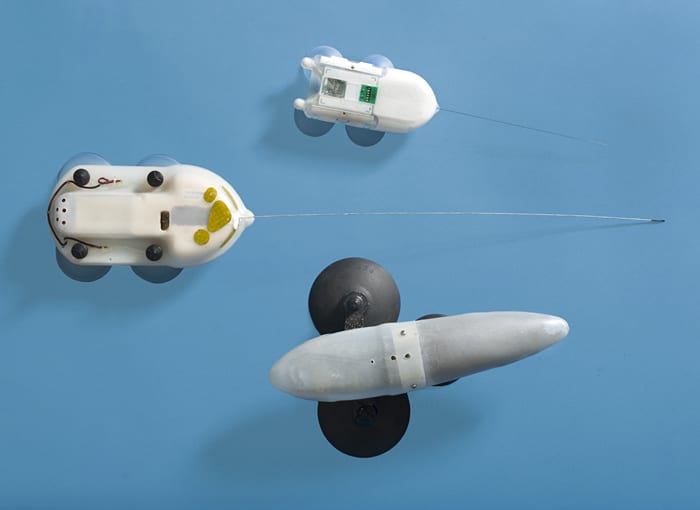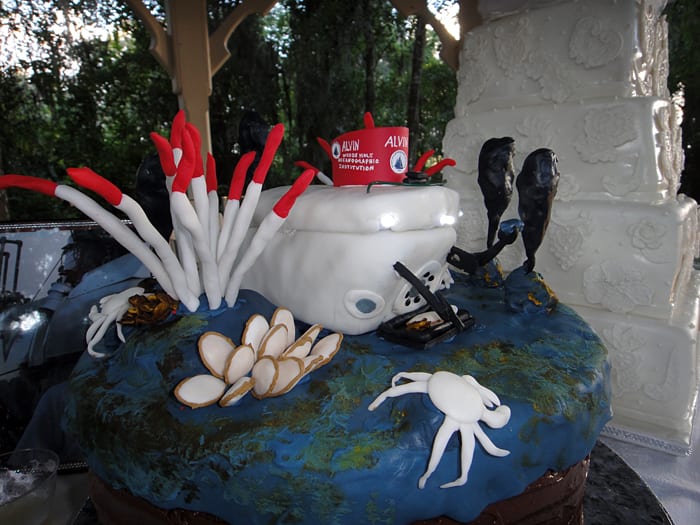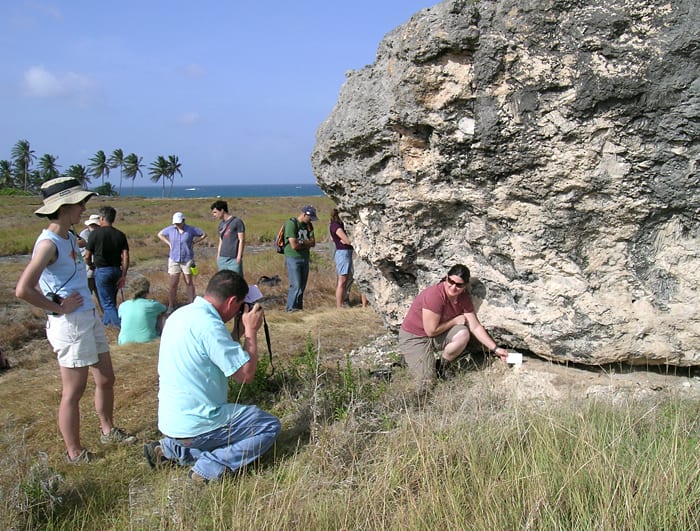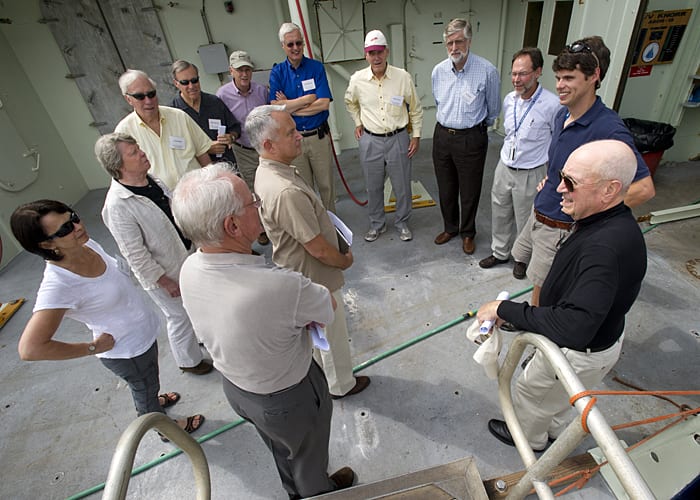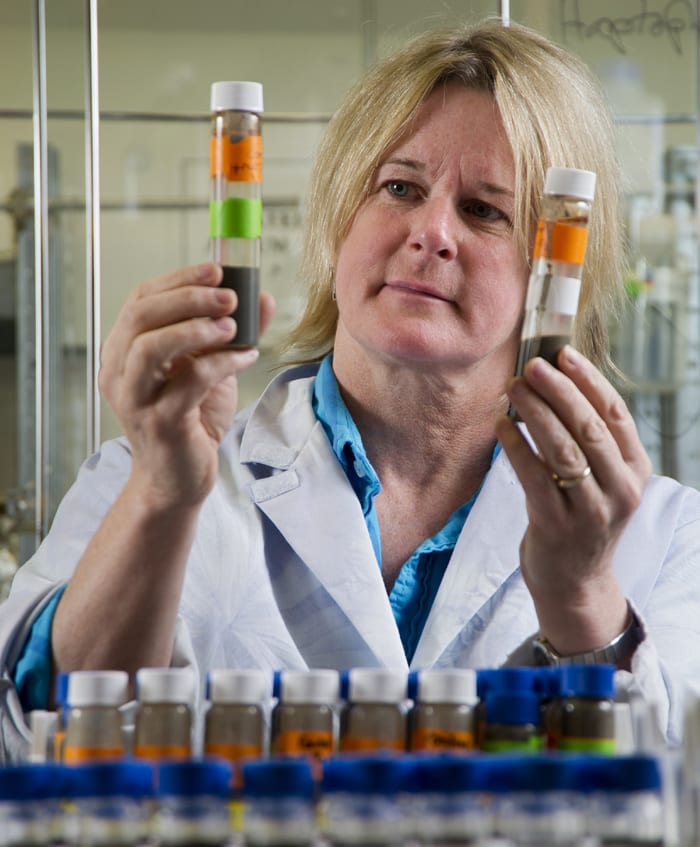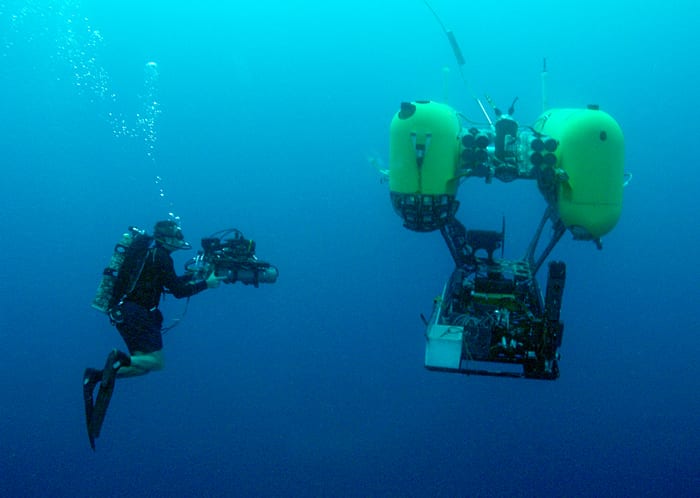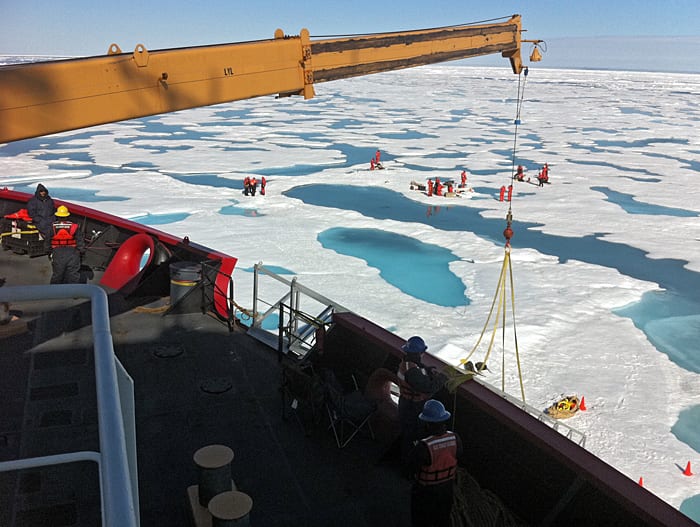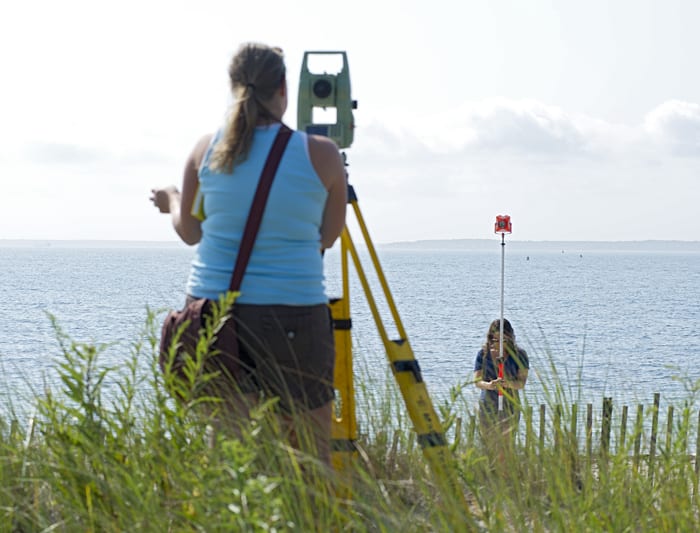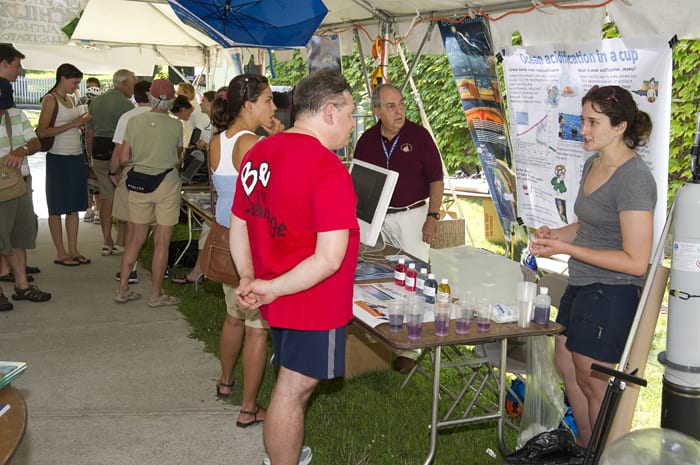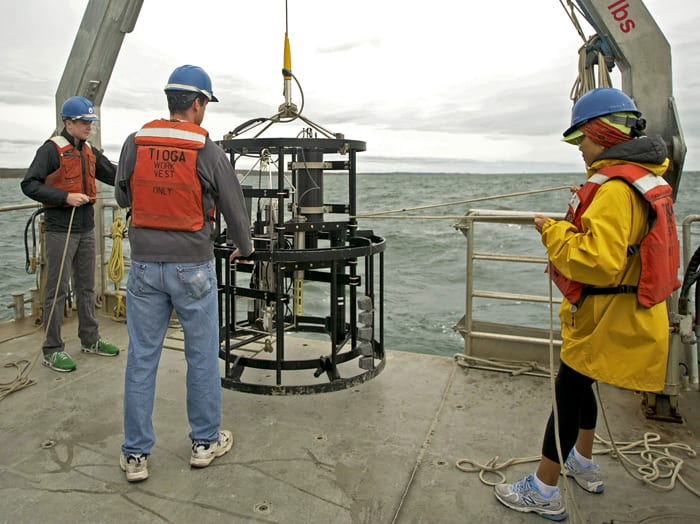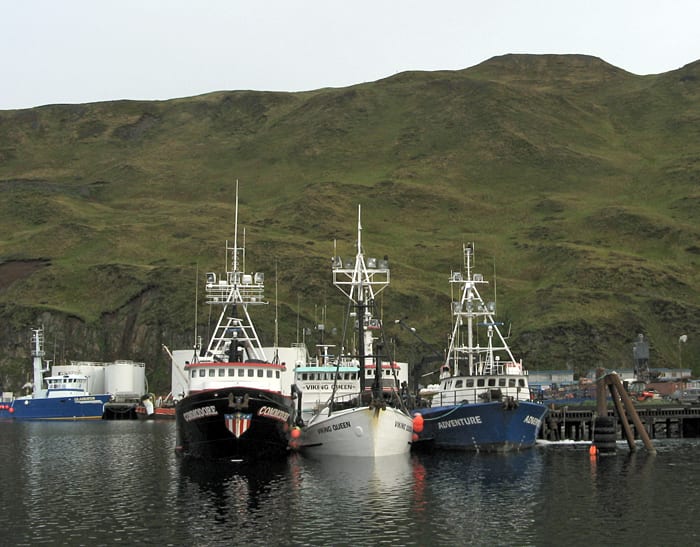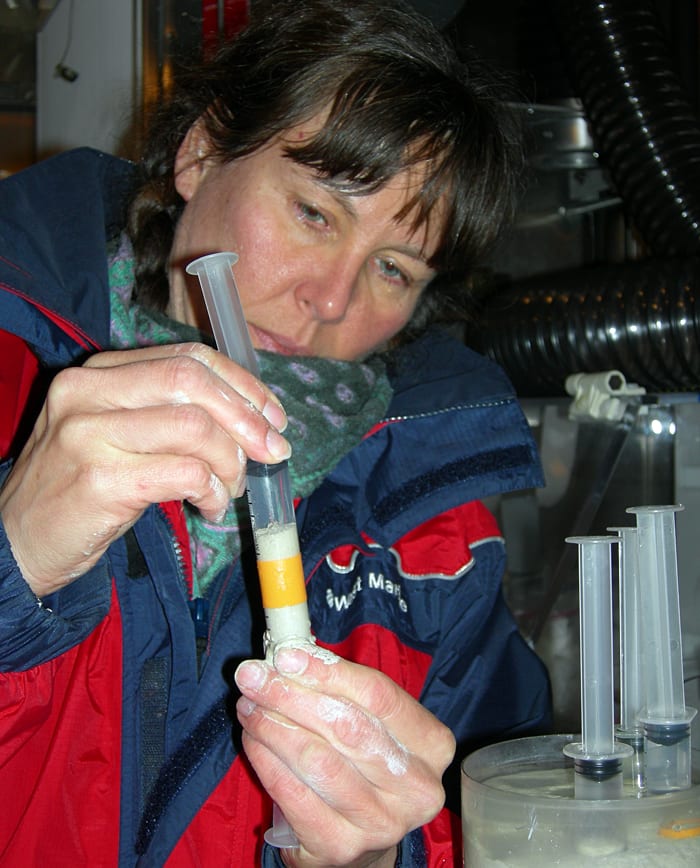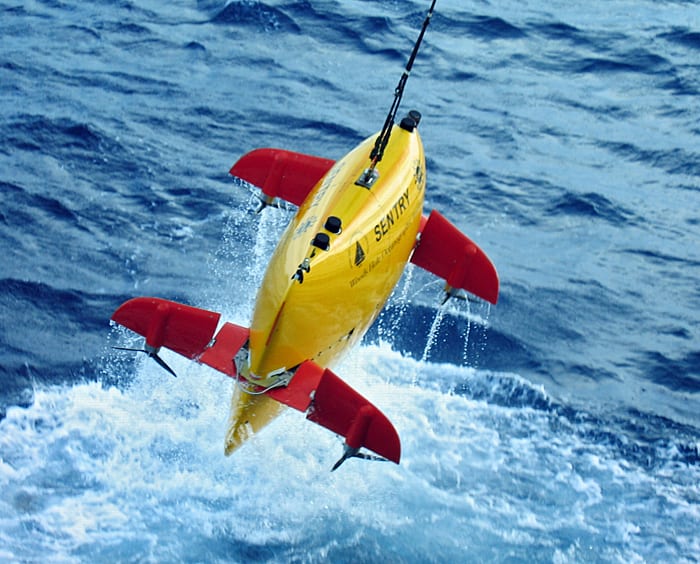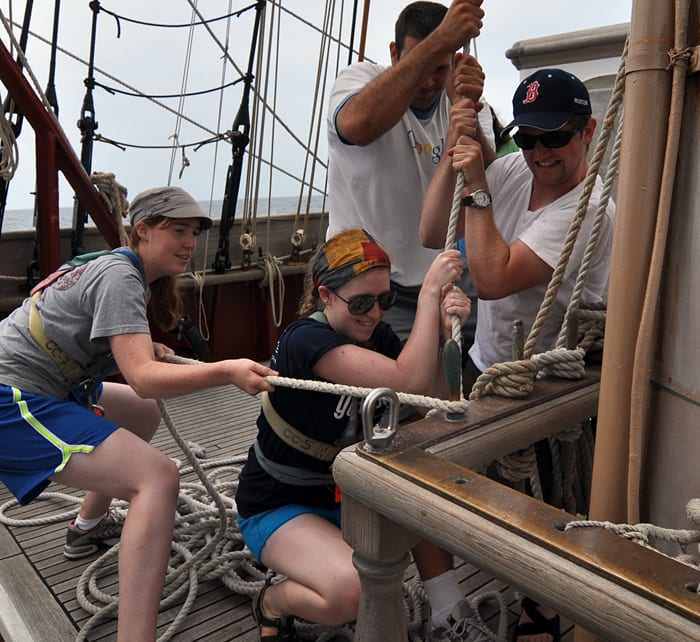Multimedia Items
1956: WHOI’s Next Chapter
In 1956 Columbus Iselin (right) signed on for a second tour of duty as WHOI’s director, succeeding Edward Smith (left). Iselin came to WHOI to captain the first R/V Atlantis and…
Read MoreHigh Tech in the Commonwealth
Massachusetts governor Deval Patrick (second from right) made his first visit to WHOI on Oct. 12, touring the facilities and learning about some of the instruments and vehicles that have…
Read MoreOcean Institutes “Technology in Ocean Science” Expo
Breaking the Ice
In October, scientists and crew aboard the US Coast Guard ice breaker Healy in the Beaufort Sea encountered strong winds that blew thick pieces of multi-year sea ice into their…
Read MoreFarewell to the Workhorse of the North Atlantic
In November 1975, R/V Oceanus first arrived at the WHOI dock to begin a long and illustrious career of oceanographic research. A mid-life refit completed in 1994 greatly changed the…
Read MoreMulti-tasking in Ocean Research
The Sea Cycler winch, being deployed from the R/V Oceanus, is the largest component of the Global Hybrid Profiler and will eventually be included as part of the Ocean Observatories…
Read MoreSampling Sediments
Joan Bernhard, a geobiologist in WHOI’s Department of Geology and Geophysics, prepares a sediment sample for analysis. Bernhard studies protists (also called protozoa) that live on and in the seafloor.…
Read MoreRestless Glacier
Helheim Glacier, one of Greenland’s largest, empties into the ocean on the southeast coast of the island. The glacier has been retreating over the past decade, and WHOI physical oceanographer…
Read MorePlaying Tag with Marine Mammals
The digital acoustic recording tag (DTAG) was developed to monitor the behavior of marine mammals and their response to sound throughout the dive cycle. As with any piece of oceanographic equipment,…
Read MoreAlvin: Good Enough to Eat
When University of Florida Prof. Mike Perfit and Renee Kattell recently held a party in Gainesville, Fla., to commemorate their wedding earlier in the summer, DSV Alvin made an appearance…
Read MoreOn the Road in Barbados
WHOI research assistant Mary Lardie holds an information card while geochronologist William Thompson takes a photo of a large fossil coral during the 2009 Geodynamics Field Trip to Barbados. Each…
Read MoreA Visit to the Knorr
In August 2011 WHOI hosted the governing board of the National Research Council, one of four organizations that comprise the United States National Academies. The visit included a tour of…
Read MoreProbing for Protists
Virginia Edgcomb, a microbial ecologist in the Department of Geology and Geophysics at WHOI, will be Chief Scientist on the next Dive and Discover cruise, which heads into the Mediterranean…
Read MoreNereus, Ready for Its Close-Up
Videographer Evan Kovacs films the hybrid remotely operated vehicle (HROV) Nereus as it descends from the sea surface. Nereus is called a “hybrid” ROV because it can operate either tethered…
Read MoreICESCAPE Walk
US Coast Guard rescue swimmers and polar bear sentinels from the USCGC Healy stand by as scientists measure sea ice properties during NASA’s 2011 ICESCAPE cruise in the Chukchi and…
Read MoreTaking the Measure of Irene
Post-doctoral scholar Andrea Hawkes (foreground) and Summer Student Fellow Leah Fine prepare for the arrival of Hurricane Irene in August by surveying a section of beach along Surf Drive in…
Read MoreOcean Acidification in a Cup
Abby Heithoff (right), a recent MIT/WHOI Joint Program graduate and recipient of the 2011 Pantaleyev Award, talks with visitors at the Woods Hole Climate Fair about ocean acidification. The fair,…
Read MoreFishing for Microfauna
Ian Smith (left) and WHOI Corporator Barbara Wu (right) help associate scientist Mark Baumgartner deploy a video plankton recorder (VPR) from the fantail of R/V Tioga. Baumgartner and assistant scientist…
Read MoreFleet at Rest
Fishing boats tied up at Dutch Harbor, Alaska, in June 2009 await their next trip to sea. A recent Morss Colloquium titled “Does it matter where we get our seafood?”…
Read MoreSearching for Life in All the Odd Places
Joan Bernhard, a geobiologist in the Department of Geology and Geophysics at WHOI, prepares a sample of seafloor sediment for analysis. Bernhard studies the single-celled eukaryotic organisms (protists) that live…
Read MoreSentry Finds New Coral in the Gulf
The autonomous underwater vehicle (AUV) Sentry is recovered to NOAA vessel McArthur II during a cruise to the Gulf of Mexico in May 2011. The goal of the cruise was…
Read MoreAll Together
Students in the MIT/WHOI Joint Program in Oceanography join Sea Education Association assistant scientist Roman Shor (second from right) raise a sail on SEA’s research vessel Corwith Cramer. The students…
Read MorePutting a Top on it
David Labranch (left) and Neil Lozey from Rose Steel, Inc., add the final beam to WHOI’s new LOSOS (Laboratory for Ocean Sensors and Observing Systems) building recently during the traditional…
Read MoreThe Core of the Matter
Elizabeth Halliday, a student in the MIT/WHOI Joint Program in Oceanography, attaches a winch collar to a coring tube so the tube can be pulled out of the sand. Each…
Read More
